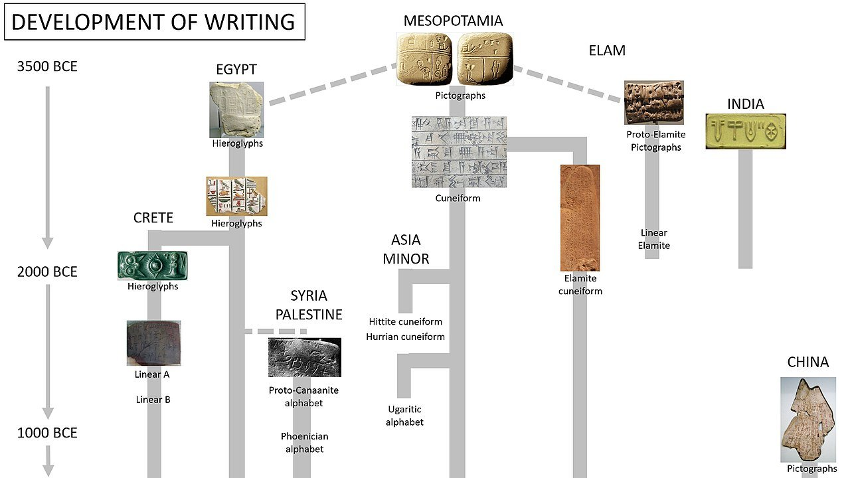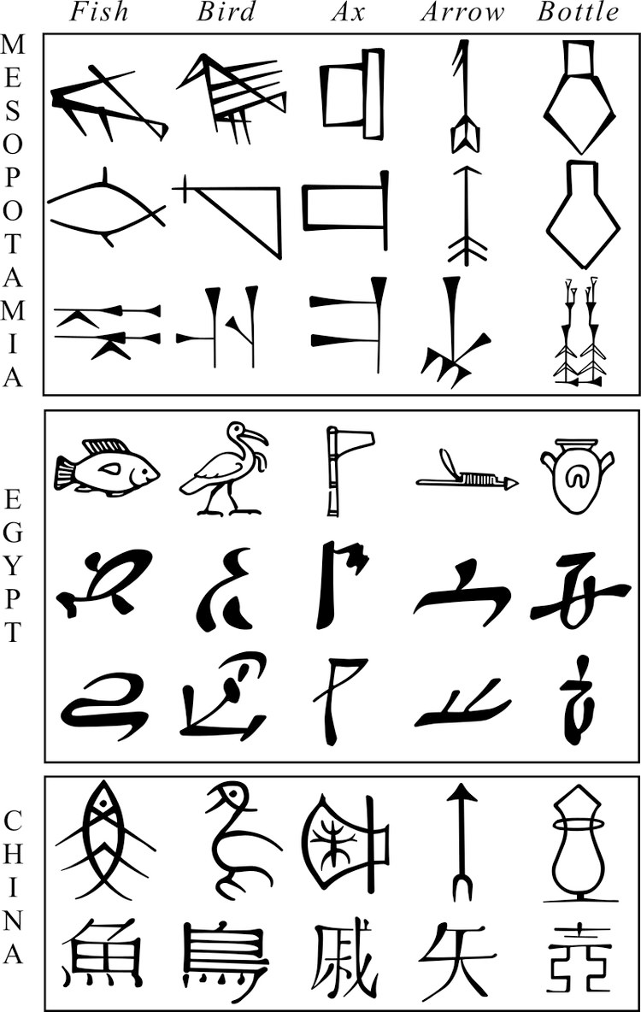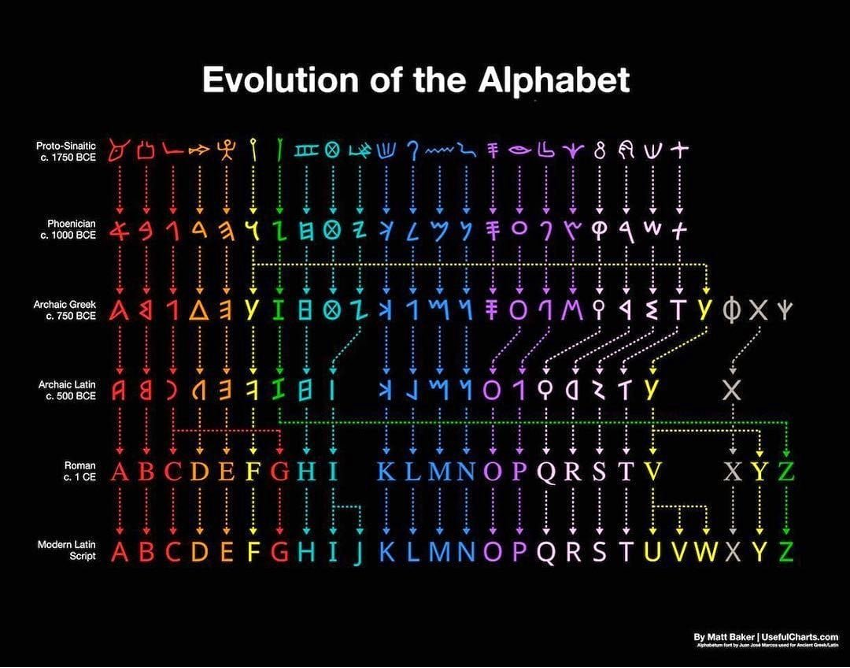Origin of writing
Although science places the appearance of writing at only about 5,000 years ago, humans have been trying to communicate for at least 45,000 years using graphic signs, such as cave paintings, which mainly represented people, animals, objects and hunting scenes. This is the case of the wild boar found in the Leang Tedongnge cave on the Indonesian island of Sulawesi, which is considered the oldest cave painting found to date. The finding of straight and curved lines, dots and handprints next to some of these paintings suggest that these works intended to convey messages, probably related to the passage of time or the presence and quantity of prey in a particular place.
The desire to communicate increasingly complex and abstract concepts, as well as the development of trade, which led to the need to keep an exhaustive record of the goods bought or sold, gave rise to the appearance of a system of graphic signs that is what we know today as writing.

Standard reconstruction of writing development. Source: https://www.thearchaeologist.org.
Most researchers agree that writing appeared in Mesopotamia, in a region located between the Tigris and Euphrates rivers. The inhabitants of this region devised between 5000 and 4000 B.C. a system of cylindrical rollers that were rolled to engrave on clay tablets a series of signs identifying the owner of the goods, as well as the product and quantity.
This system evolved and between 3400 and 3200 B.C. cuneiform writing appeared, a logographic (in which each sign represented a concept), and a syllabic writing system (since it included some symbols that represented syllables, which made it possible to compose different words). Cuneiform writing was used to express itself in several languages, mainly Sumerian, Hittite and Akkadian, and was so-called because the inscriptions were wedge-shaped.
At the same time, around 3300 BC, hieroglyphic writing appeared in Egypt, which mixed logograms and signs representing consonant sounds (simple or combining up to 4 sounds), known as the abyad or aliphate system.
It was not until two millennia later, around 1200 B.C., that Chinese writing appeared, the only logographic system that has survived to the present time.
Although in the beginning these three types of writing used pictograms (representations of real objects) to transmit concepts, the difficulty of engraving on materials such as wood or stone led to a simplification and stylization of the symbols, which became more arbitrary and less iconic, which facilitated writing and simultaneously restricted reading to the scribes, who normally belonged to the privileged classes.

From pictograms to abstract forms, in Mesopotamian cuneiforms, Egyptian hieroglyphs and Chinese characters. Source: https://www.thearchaeologist.org.
Around 1500 B.C., in the area of Mount Sinai, the first alphabetic systems appeared, in which each sign represented a single sound. These symbols represented only consonant sounds and were taken from existing systems, i.e. cuneiform and hieroglyphic, although new signs were also invented from pictograms of words beginning with that sound (e.g. the “m” in the word “mem”, meaning “waves”). The Phoenicians slightly modified the letters and introduced some vowels from existing consonants (e.g., the “i” from the “j”, the “u” from the “w”), the Greeks further stylized the shape of the letters and added the rest of the vowels, and the Romans made minor modifications to the Greek alphabet until they gave the letters the shape we know today (Dehaene, 2009).

Evolution of the current alphabetic system from the Proto-Sinaitic to the modern Latin alphabet. Source: Matt Baker.
Although the most widely used orthographic system today is alphabetic (especially Latin), there are still different orthographic systems in the world derived from some of those early writing systems.


